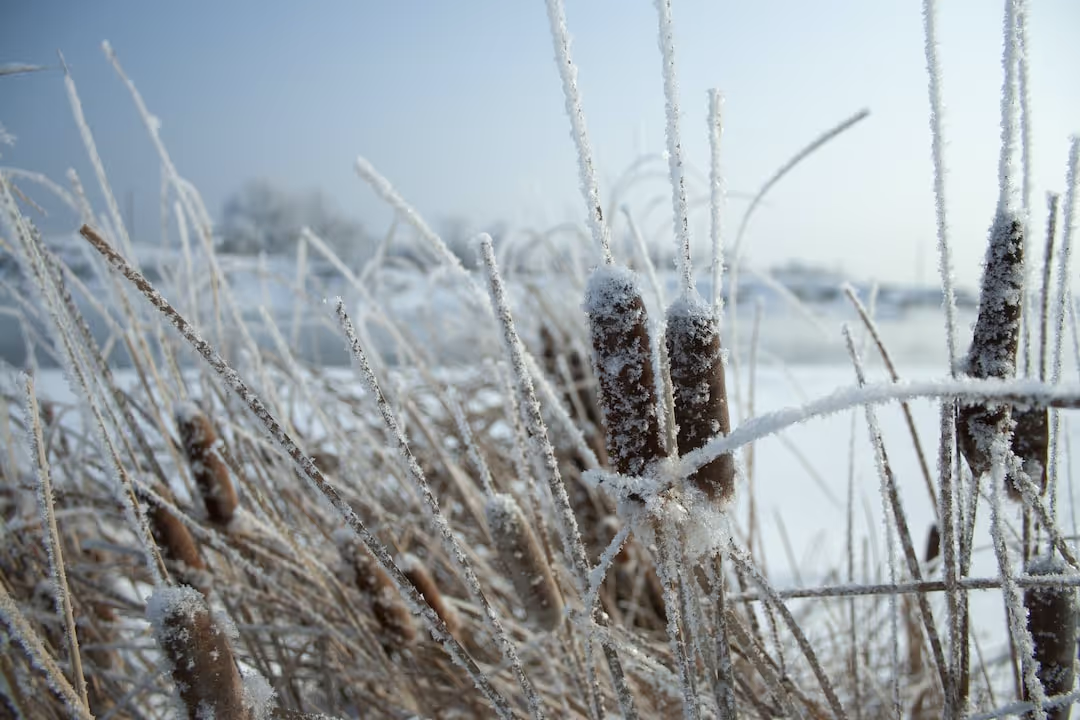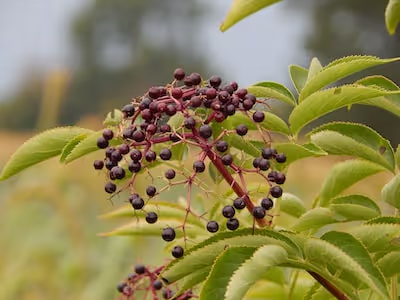Growing Cattails: A Simple Guide for Lush Water Gardens

Growing Cattails
Growing cattails adds texture, beauty, and ecological value to ponds and wet gardens. Start growing cattails by planting their rhizomes in shallow water or moist soil with full sun exposure. Encourage vigorous growth and healthy plant colonies by maintaining consistent moisture and thinning cattails annually—read on to discover simple tips for thriving cattail stands.
Cheatsheet: Cattail Success for Water Lovers
🌊 Ideal Spots
Full sun. Soil: Muddy, wet, shallow water (2-12 in / 5-30 cm depth). Border ponds or marshy beds.
🌱 Planting
- Spring or early summer for best root spread.
- Space rhizomes 18-24 in / 45-60 cm apart.
- Push into mud, cover with silt.
💧 Water Needs
Keep soil constantly moist. Flood area if exposed to drought. Submerge 2-10 in (5-25 cm).
⚡ Rapid Growth
Spreads fast: Up to 8 ft (2.5 m) tall in one season. 1 rhizome can yield 20+ stalks in a year. Thin yearly to control spread.
✂️ Upkeep
- Remove seed heads to reduce self-seeding.
- Cut back brown stalks late fall.
- Divide clumps every 2-3 yrs for best vigor.
👩🌾 Tools and Products You'll Need
- Cattail rhizomes (Typha spp.)
- Spade or trowel
- Rubber boots or waders
- Pruning shears
🌾 For Self-Sufficiency
Eatable parts: roots, shoots, pollen. Rich in starch—roots have 73% carbohydrates. Use pollen as flour or eat young shoots (cook well).
-
Growing Cattails for Lush Water Gardens
I learned early that a single clump of Growing Cattails can flip a plain pond into a living stage, with red‑winged blackbirds arriving like clockwork. The trick is guiding their power, not fighting it.
Know your Typha: what to plant, where
Typha latifolia (broadleaf cattail) thrives in shallow water up to about 12 in or 30 cm and reaches 5 to 10 ft or 1.5 to 3 m. It suits temperate ponds and naturalized shorelines.
Typha angustifolia (narrowleaf cattail) tolerates deeper water to 24 in or 60 cm and often spreads faster. I only use it in large, contained systems.
Typha minima (dwarf cattail) tops out around 12 to 30 in or 30 to 75 cm and fits patio tubs and tight margins. It stays polite if you plant it in a basket.
“Grow in wet soil or shallow water in full sun.” — Royal Horticultural Society
Check your state or provincial list for invasive or restricted species. Hybrids like Typha × glauca can overrun small ponds.
Site and water depth
Cattails want full sun for 6 to 8 hours and still water or slow coves. Shade shortens stems and stalls flowering.
- Broadleaf: crown 0 to 8 in or 0 to 20 cm below the surface on a marginal shelf.
- Narrowleaf: crown 8 to 20 in or 20 to 50 cm below the surface in larger ponds.
- Dwarf: crown 0 to 4 in or 0 to 10 cm below the surface in containers.
Soil and containers that keep cattails in bounds
I use heavy loam with 20 to 30 percent clay and zero peat. Peat floats and fouls filters.
For baskets: pick 3 to 7 gal or 11 to 26 L perforated pond baskets, line with burlap, fill with loam, and top with 1 to 2 in or 2.5 to 5 cm of pea gravel. The gravel stops fish and current from uprooting rhizomes.
For unruly sites: install a 24 in or 60 cm deep root barrier around a bed, overlapped and clamped. It acts like a corral.
Planting, step by step
- Plant in spring once water holds 50 to 55 F or 10 to 13 C for two weeks.
- Set rhizomes horizontally, eyes up, 1 to 2 in or 2.5 to 5 cm below the soil surface.
- Water in slowly to settle silt, then lower the basket onto the shelf.
- Stake the basket for two weeks in windy ponds so shoots do not rock loose.
Plugs in 3 to 4 in or 7.5 to 10 cm cells transplant cleanly if you keep the root ball intact. I cut the basket corners to let roots breathe in heavy clay water.
Feeding and water quality
Cattails are nutrient magnets, so I rarely feed plants in earth-bottom ponds. In containers, one aquatic tablet in spring, low phosphorus, suffices.
Too much phosphorus spikes algae. EPA and limnology texts point out that freshwater often flips when phosphorus climbs, so I keep fish feed tight and rinse filters often.
Care calendar that works
- Spring: thin clumps, top up gravel caps, reset water depth after floods.
- Early summer: stake first-year plants, remove stray runners along liners.
- Late summer: cut seed spikes if you need zero volunteers.
- Late winter: cut stems to 6 to 8 in or 15 to 20 cm above water to leave air channels in the aerenchyma. That keeps crowns from smothering under ice.
Containment and control
In small ponds, I keep every cattail in a basket. That turns a would‑be bulldozer into a houseplant with swagger.
Deadhead before the fluff forms, bag the spikes, and bin them. Do not compost the fluff unless your pile runs hot for weeks.
“A single cattail spike can carry up to 250,000 seeds.” — University Extension literature
If a runner escapes, pull the runner whole, roots and all, when the soil is soft after rain. Fragments regrow in warm silt.
Propagation that actually works
- Division: slice the rhizome into 4 to 6 in or 10 to 15 cm pieces with 2 buds each, dust cuts with powdered charcoal, and replant immediately.
- Seed: chill damp seed in the fridge for 4 to 6 weeks, sow on saturated loam, keep bright light, and mist to keep the surface glossy. Seedlings resent drought and crowding.
Wildlife value and pond function
Cattails host marsh wrens, bitterns, and red‑winged blackbirds, and they shelter dragonfly larvae. Muskrats may prune your stand for free, sometimes with zeal.
Wetland research shows emergent beds like Typha can strip measurable nitrogen and phosphorus from water in season. That is biofiltration with style.
USDA plant guides describe Typha as productive emergent perennials that stabilize edges and trap sediment. I have watched a muddy shoreline clear in one summer behind a new stand.
Safety, legality, and good manners
Never introduce cattails into natural wetlands without permits. Some regions restrict narrowleaf and hybrids because they form dense monocultures.
If you forage, only harvest from clean, tested water. Rhizomes, shoots, and pollen have long culinary histories, but contamination is a real risk.
Top choices for Growing Cattails in designed ponds
- Best for containers: Typha minima. Compact habit, tidy chocolate catkins, easy to thin.
- Best for wildlife shelves: Typha latifolia. Thick cover, sturdy in winter, easy to source.
- Best for deeper zones: Typha angustifolia. Use only with containment and space.
Smart alternatives if space is tight
- Acorus gramineus and Acorus calamus (sweet flag): swordlike foliage, fragrant rhizomes, noninvasive in baskets.
- Pontederia cordata (pickerelweed): blue spires, pollinator magnet, 4 to 12 in or 10 to 30 cm water.
- Juncus effusus (soft rush): year‑round structure, handles fluctuating levels.
- Schoenoplectus tabernaemontani (softstem bulrush): vertical lines, easy to thin.
- Dramatic annual: dwarf papyrus selections for summer tubs in warm zones.
Buying guide and costs
Garden‑grade rhizome divisions usually run 5 to 15 USD or 5 to 14 EUR each. Nursery pots in 1 gal or 4 L run 15 to 25 USD or 14 to 24 EUR.
Pick firm, pale rhizomes with live buds and no odor of rot. Avoid bare fluff seed unless you enjoy long germination benches.
Grab a heavy pond basket, burlap liner, pea gravel, and a low‑phosphorus aquatic fertilizer tablet. If your pond is lined, a root barrier strip near the shelf saves headaches later.
Troubleshooting
- Leaves yellow early: raise the crown to slightly shallower water or increase sun. Cold, deep water slows root oxygenation.
- Algae bloom: cut back fish feed, pull trapped debris from bases, and skip fertilizer for a month. Shade from leaf fans helps by midsummer.
- Plants flop: wind fetch too long or shade midday. Move the basket leeward and thin to reduce sail area.
- Ice damage: leave 6 to 8 in or 15 to 20 cm stubble above water in winter. That keeps the internal air pipes open.
Field notes from seasons that taught me things
I once planted broadleaf in a 100 gal or 380 L stock tank at 6 in or 15 cm depth, and it hit 7 ft or 2.1 m by August. The second year, I halved the clump in April and the water stayed sweeter all summer.
In a client’s koi pond, dwarf cattail in baskets cured filter clogging from floating media. The gravel caps held fast through storms and heron traffic.
Frequently Asked Questions About Growing Cattails
What soil type works best for cattails?
Cattails thrive in moist, waterlogged soils rich in organic matter. Soil with a slightly acidic to neutral pH (around 6.0 to 7.0) provides optimal conditions. Loamy, clay-rich soil retains moisture effectively, supporting vigorous growth.
How much sunlight do cattails require?
Full sun exposure benefits cattail growth most effectively. Aim for at least 6 to 8 hours of direct sunlight daily. While cattails can tolerate partial shade, their height and density improve significantly under ample sunlight.
What depth of water is suitable for planting cattails?
Plant cattails at a depth of 6 to 12 inches (15–30 cm) beneath the water's surface. Maintain consistent moisture levels and avoid planting deeper than 2 feet (60 cm), as overly deep water inhibits healthy growth.
How quickly do cattails spread?
Cattails spread rapidly through their extensive underground rhizome systems. Under ideal growing conditions, a small clump can expand noticeably within a single growing season. To control their spread, consider regular thinning or using planting containers to confine roots.
When is the ideal time to plant cattails?
Plant cattails in the spring or early summer, after the risk of frost subsides and temperatures consistently reach above 60°F (15°C). This timing allows plants to establish effectively before colder weather sets in.
How do I manage and control cattails growth?
Regularly thinning cattails by removing excess rhizomes prevents overgrowth. For targeted control, consider using sturdy container planting to limit root expansion. If chemical control becomes necessary, consult gardening professionals to select environmentally safe herbicides suited to aquatic environments.
Are cattails beneficial for wildlife?
Yes, cattails provide essential habitats for wildlife. Their dense stands offer shelter for birds, amphibians, and small mammals. Additionally, cattails act as natural water filters, absorbing nutrients and pollutants—improving water quality for aquatic life.
Growing cattails brings a raw, untamed beauty to any water garden. Their sturdy stalks and bold presence anchor the edge of a pond, while their striking brown spikes offer shelter and interest through every season. Give them full sun and a muddy base, and they’ll do the rest. Remember to keep them in check—these plants aren’t shy about taking over if left alone. If you enjoy cultivating edibles near water, you might also find inspiration in growing cranberries for a different kind of harvest. In the end, growing cattails is about letting nature show off, while you sit back and admire the wild beauty you’ve made possible.
The Prepper's Guide to Cattails: Essential Uses for Survival and Self-Sufficiency
Edible and Nutritious Food Source
- Rhizomes (roots): Harvest in early spring or late autumn; rich in starch, cook as potatoes or grind into flour.
- Shoots: Collect young shoots in spring; peel and eat raw or steamed; high in vitamins A, C, potassium, and phosphorus.
- Pollen: Gather summer pollen heads; protein-rich, use as flour substitute or nutrient booster in meals.
- Seeds: Roast ripe seeds in autumn; good protein, grind and add to porridge or bread.
Medicinal and Health Benefits
- Antiseptic Poultice: Crushed rhizomes applied externally soothe minor burns, cuts, and insect bites.
- Digestive Aid: Tea brewed from cattail roots helps relieve mild digestive discomfort.
Survival Tools and Materials
- Insulation: Fluff from mature cattail heads provides efficient insulation for clothing, bedding, and shelter walls.
- Cordage: Fibers from leaves make durable ropes and twine for nets, baskets, or binding tools.
- Tinder and Firestarter: Dry cattail fluff ignites quickly, valuable as reliable emergency fire tinder.
Natural Water Purification
Cattails naturally remove toxins and pollutants (heavy metals, nitrates, phosphates) from water, improving water quality for emergency filtration.
Wildlife Habitat for Sustained Hunting
Planting cattails attracts birds, amphibians, and small mammals, providing consistent food and resource availability in survival situations.
Find out which plants will thrive in your garden!
Answer a few fun questions and get custom plant recommendations perfect for your space. Let’s grow something amazing together!

start your season





